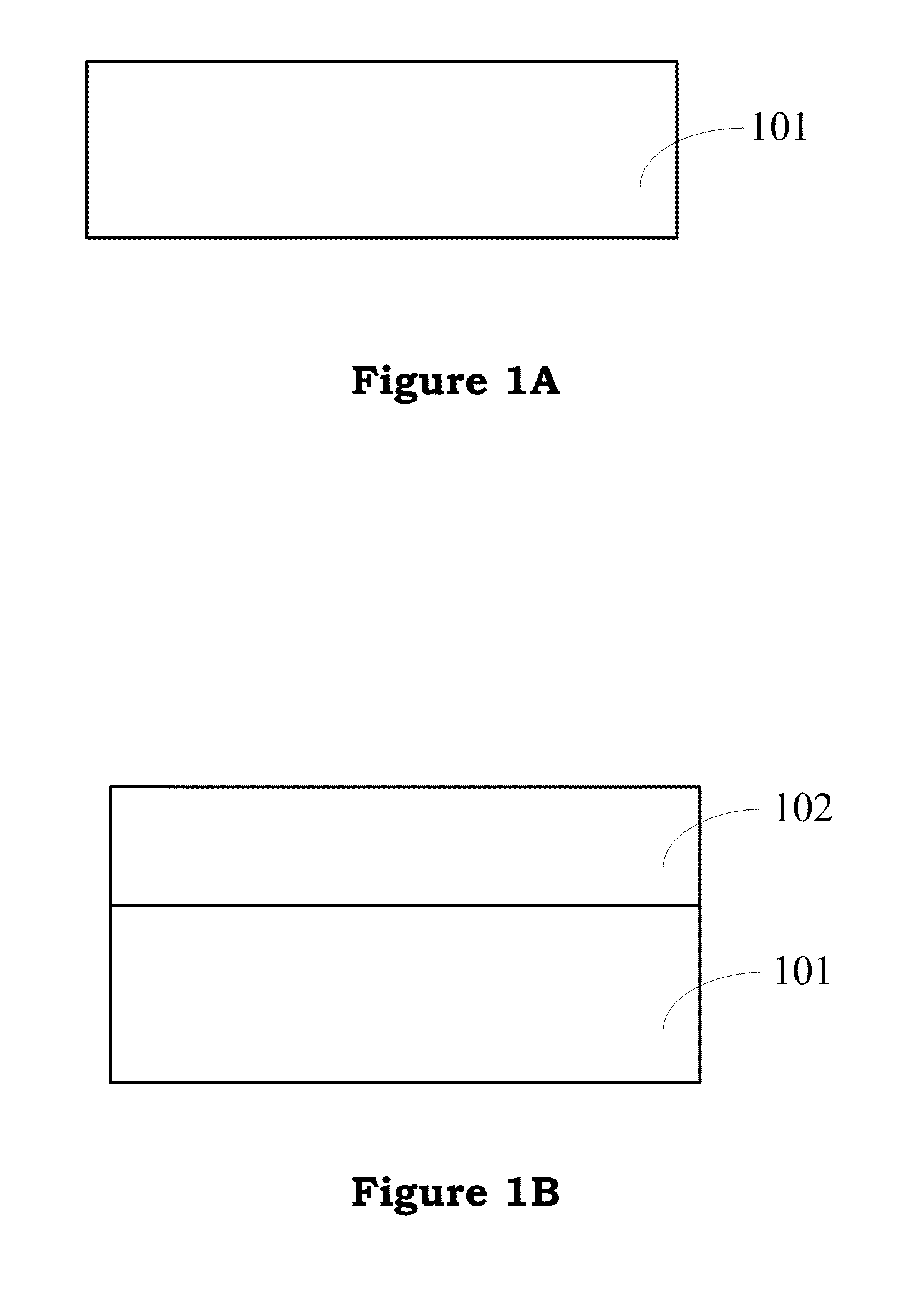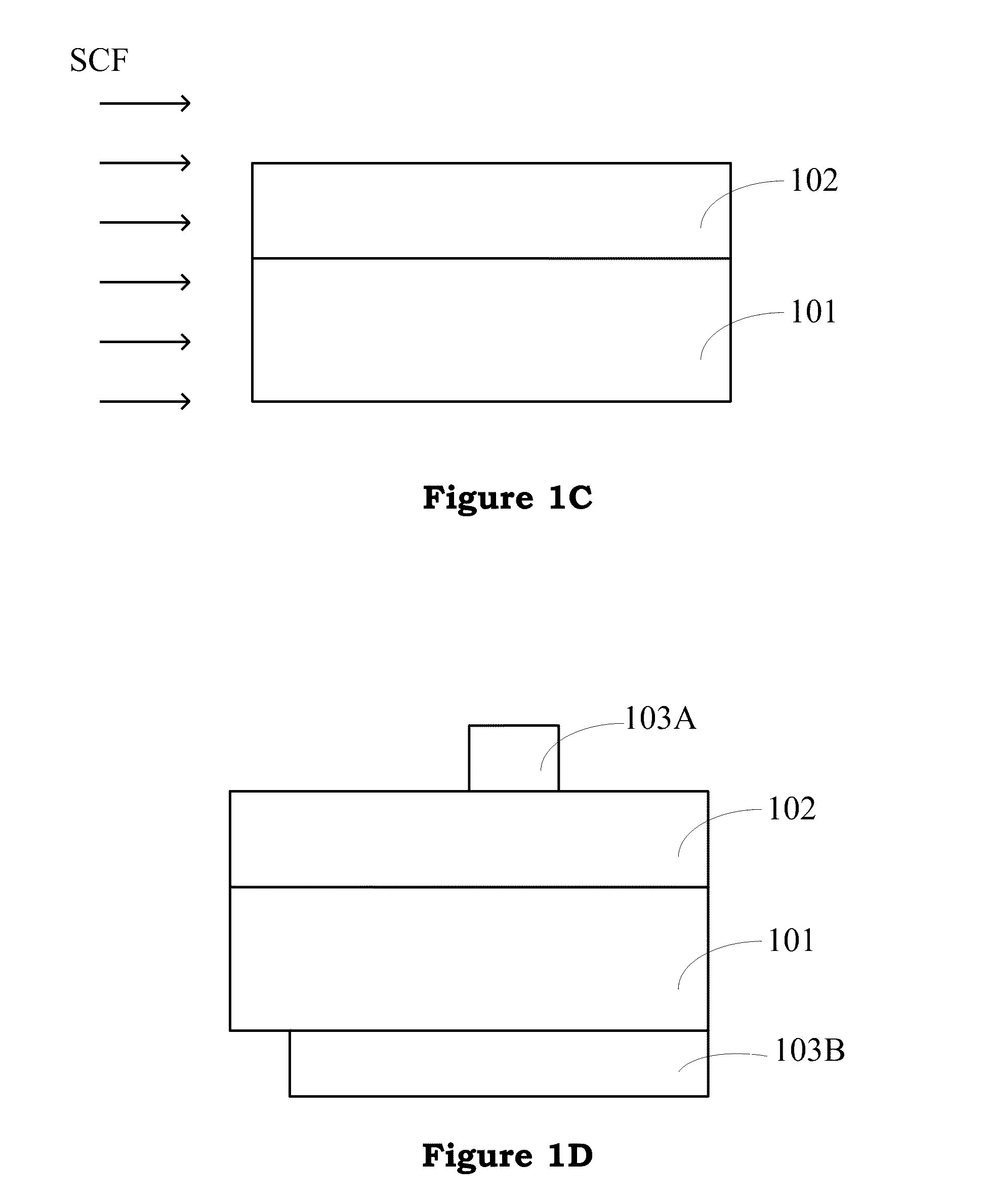Method for forming an interfacial passivation layer on the Ge semiconductor
a technology of interfacial passivation and germanium semiconductor, which is applied in the direction of semiconductor/solid-state device manufacturing, basic electric elements, electric apparatus, etc., can solve the problems of gate leakage current increasing, threshold voltage shift, and inability to form interfaces, etc., to achieve great innovation and advancement, good quality
- Summary
- Abstract
- Description
- Claims
- Application Information
AI Technical Summary
Benefits of technology
Problems solved by technology
Method used
Image
Examples
first embodiment
[0030]The invention relates to a method for forming an interfacial passivation layer on the germanium (Ge) semiconductor. The detail of FIG. 1A to FIG. 1D in the first embodiment is described as follows:
[0031]As shown in FIG. 1A, firstly, the general epitaxy technology (such as Molecular Beam Epitaxy process, Metal-Organic Chemical Vapor Deposition process) is employed to deposit a Ge semiconductor layer 101 (about 2.5 μm thick).
[0032]As shown in FIG. 1B, the Low Pressure Chemical Vapor Deposition System (LPCVD) is employed to deposit a silicon dioxide (SiO2) layer 102 (about 12 nm thick) on the Ge semiconductor layer 101 (including P-type Ge semiconductor layer or N-type Ge semiconductor layer), which is used as the gate insulator layer.
[0033]As shown in FIG. 1C, mix the carbon dioxide gas, 1˜10 vol % water oxidant, and propyl alcohol at 100° C. to 200° C. and 1000 psi to 3500 psi to form the low-temperature supercritical fluid (SF). Carry the supercritical fluid into the interface...
second embodiment
[0035]The invention relates to a method for forming an interfacial passivation layer on the Ge semiconductor after thermal annealing. The detail of FIG. 2A to FIG. 2E in the second embodiment is described as follows:
[0036]As shown in FIG. 2A, firstly, the general epitaxy technology (such as Molecular Beam Epitaxy process, Metal-Organic Chemical Vapor Deposition process) is employed to deposit a Ge semiconductor layer 201 (about 2.5 u, thick).
[0037]As shown in FIG. 2B, the Low Pressure Chemical Vapor Deposition System (LPCVD) is employed to deposit a silicon dioxide (SiO2) layer 202 (about 12 nm thick) on the Ge semiconductor layer 201 (including P-type Ge semiconductor layer or N-type Ge semiconductor layer), which is used as the gate insulator layer.
[0038]As shown in FIG. 2C, the annealing treatment is performed for the silicon dioxide layer (insulator layer) 202 and the Ge semiconductor layer 201 at about 400° C.
[0039]As shown in FIG. 2D, mix the carbon dioxide gas, 1˜10 vol % wat...
PUM
| Property | Measurement | Unit |
|---|---|---|
| thickness | aaaaa | aaaaa |
| temperature | aaaaa | aaaaa |
| temperature | aaaaa | aaaaa |
Abstract
Description
Claims
Application Information
 Login to View More
Login to View More - R&D
- Intellectual Property
- Life Sciences
- Materials
- Tech Scout
- Unparalleled Data Quality
- Higher Quality Content
- 60% Fewer Hallucinations
Browse by: Latest US Patents, China's latest patents, Technical Efficacy Thesaurus, Application Domain, Technology Topic, Popular Technical Reports.
© 2025 PatSnap. All rights reserved.Legal|Privacy policy|Modern Slavery Act Transparency Statement|Sitemap|About US| Contact US: help@patsnap.com



